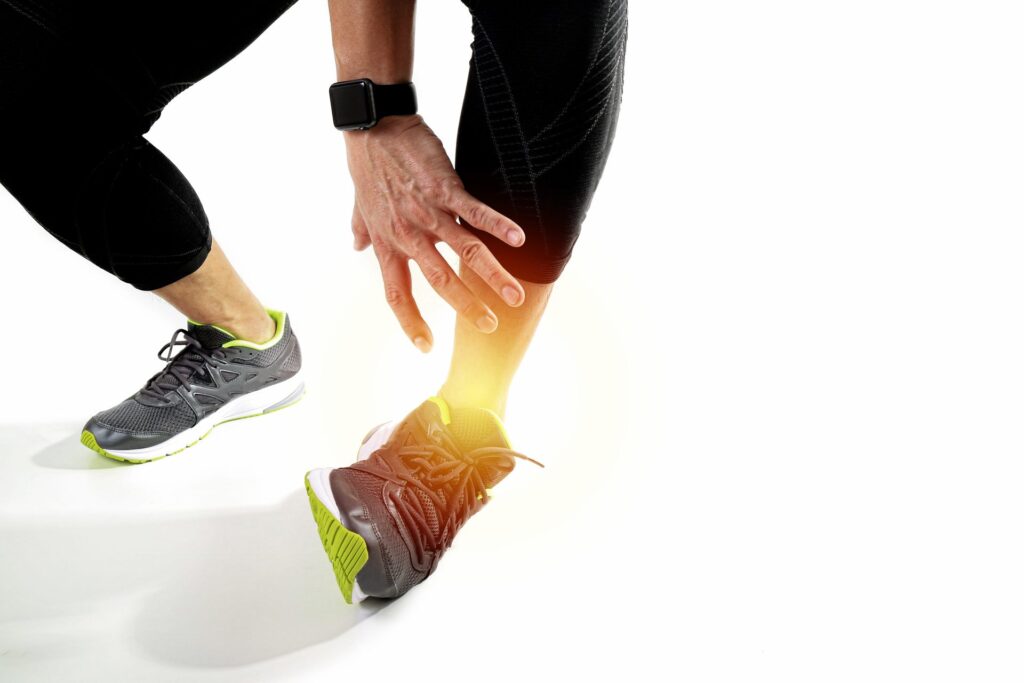Learn more about Acute Lateral Ankle Sprain
A sprained ankle is not just a sprained ankle…
Are you currently experiencing an Acute Lateral Ankle Sprain and it has stopped you from doing your daily workout routine and physical training activities?
What is an Acute Lateral Ankle Sprain?
Acute lateral ankle sprains are common. They are seen in primary care and sports medicine practices and emergency departments.
It results in significant short-term morbidity, recurrent injuries and functional instability. Up to 40% of all traumatic ankle injuries occur during sports but are also seen in normal active people too.
A lateral ligament ankle sprain occurs when the 3 ligaments on the outside of the ankle are stretched beyond their limits and tear. Torn ligaments causes pain and swelling in the ankle. The severity and extent to which the ligaments are torn will be graded as a I, II or a III. Ligaments help stabilize joints, preventing excessive movement. Generally, most sprained lateral ligaments are minor and improve with treatments.
Causes of Acute Lateral Ankle Sprain
Reasons of a sprained ankle might include:
- A fall causing your ankle to twist
- Ankle rolling
- Landing awkwardly on your foot after jumping or pivoting
- Walking or exercising on an uneven surface
- Another person stepping or landing on your foot during a sports activity
Prevention
The best way to prevent ankle sprains is to maintain good muscle strength, balance, and flexibility. The following precautions will help prevent sprains:
- Warm up thoroughly before exercise and physical activity
- Perform strengthening exercises to enhance your ankle stability
- Pay careful attention when walking, running, or working on an uneven surface
- Choose footwear with appropriate support for your activity
Once you have sprained your ankle, the injured area may continue if the ligament in foot do not have time to completely heal. This can happen if you return to work, sports, or other activities before your ankle heals. It may be difficult to determine the complete healing of ligaments, but symptoms (pain and swelling) can often guide the advancement of physical therapy and function.
Most sprains heal with conservative treatments like ice to reduce swelling, elevation, over-the-counter medications, and simple rehabilitation exercises. However, if your ankle remains swollen or painful for several weeks despite conservative treatments, you may need to be evaluated to ensure that you do not have a severe ankle sprain or fracture. If you are grumbling for more than 3 months, it has possibly been chronic already and you need to seek for an immediate medical advice.
If you are having a tough time with your Ankle Sprain, we can provide a consultation and treatment for you. Schedule an appointment here or you may call us at 44 (0) 207 101 4000. 📞
We hope you have a loveLEG day! 👣☀️
-The Chelsea Clinic and Team
Learn more about Shin Splints here https://www.thechelseaclinic.uk/suffering-from-shin-splints-and-how-to-treat-them/
Check our blog about Ankle Sprain here https://www.thechelseaclinic.uk/ankle-sprain/
Read our blog about Ankle Injuries here https://www.thechelseaclinic.uk/chronic-lateral-ankle-injury/




